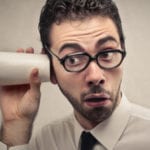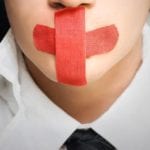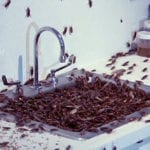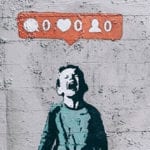 Weird Stuff
Weird Stuff  Weird Stuff
Weird Stuff  Mysteries
Mysteries 10 Tragic Disappearances and Deaths in Joshua Tree National Park
 History
History 10 Ways Childhood Really Sucked in the Old West
 Music
Music 10 Name Origins of Famous Bands from the 1990s
 Religion
Religion 10 Biggest Turnarounds by the Catholic Church
 Weird Stuff
Weird Stuff 10 Unbelievable Times Laws Had Unintended Consequences
 Humans
Humans Ten Historic Women Who Deserve Way More Credit Than They Got
 Movies and TV
Movies and TV 10 Films That Spawned Major Lawsuits
 History
History Ten Times Towns Were Wiped Off the Face of the Earth
 Creepy
Creepy 10 of the Most Disturbingly Haunted Public Houses in the UK
 Weird Stuff
Weird Stuff 10 Niche Subcultures That Are More Popular Than You Might Think
 Mysteries
Mysteries 10 Tragic Disappearances and Deaths in Joshua Tree National Park
 History
History 10 Ways Childhood Really Sucked in the Old West
Who's Behind Listverse?

Jamie Frater
Head Editor
Jamie founded Listverse due to an insatiable desire to share fascinating, obscure, and bizarre facts. He has been a guest speaker on numerous national radio and television stations and is a five time published author.
More About Us Music
Music 10 Name Origins of Famous Bands from the 1990s
 Religion
Religion 10 Biggest Turnarounds by the Catholic Church
 Weird Stuff
Weird Stuff 10 Unbelievable Times Laws Had Unintended Consequences
 Humans
Humans Ten Historic Women Who Deserve Way More Credit Than They Got
 Movies and TV
Movies and TV 10 Films That Spawned Major Lawsuits
 History
History Ten Times Towns Were Wiped Off the Face of the Earth
 Creepy
Creepy 10 of the Most Disturbingly Haunted Public Houses in the UK
10 Sleeping Disorders You Don’t Want To Have
Sleep is a pretty amazing thing, but with over 100 different sleeping disorders, some people are not getting the kind of sleep they want. Most sleeping disorders are ones most of us have heard of: sleep apnea, sleep walking, sleep talking, teeth grinding (bruxism), narcolepsy, and sleep paralysis, just to name a few. There are a fair number of unusual sleeping behaviors and disorders that don’t get as much attention as the more well-known ones, but here are a few more to keep you up at night.
10Sleep State Misperception
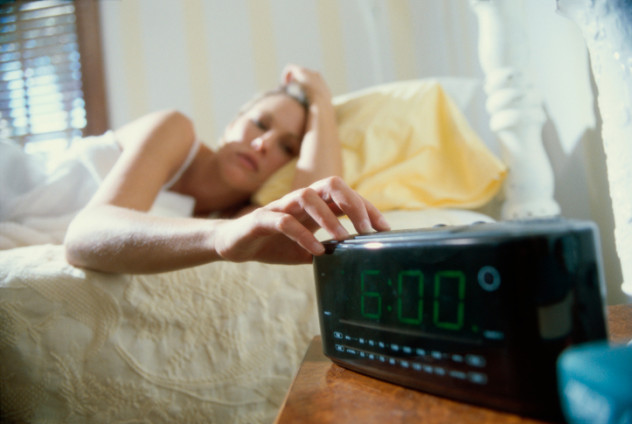
We have all had those moments when we think we haven’t slept. In fact, you are sure you haven’t slept, but you could be suffering from sleep state misperception, also known as paradoxical insomnia. This term is used for people who underestimate their sleep as being awake and also for those who overestimate their sleep. People who have this disorder may report having very poor sleep or no sleep at all, but an in-lab study can show that their sleeping is within normal standards.
Sleep studies have shown that people are very poor at estimating the amount of sleep they are actually getting. Paradoxical insomnia occurs usually in young and middle-aged males and can cause depression and anxiety. Behavioral treatment such as sleep restriction as well as medications can help with symptoms. Paradoxical insomnia only accounts for about 5 percent of patients who are looking for treatment for their insomnia.
9Sleep-Related Painful Erections
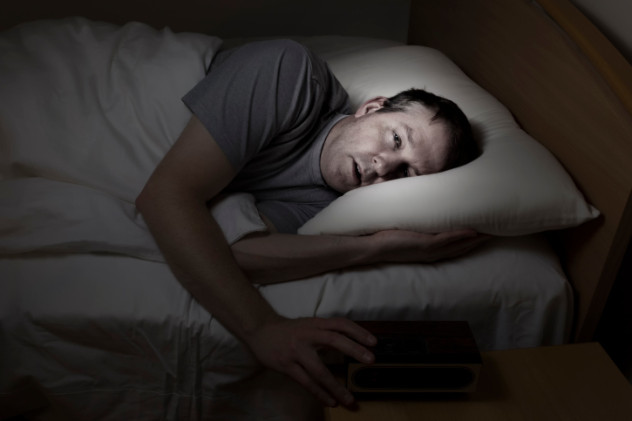
While erections are very normal during sleep (and oftentimes very pleasant) there are some men who suffer from very painful erections while sleeping. According to the Principles and Practices of Sleep Medicine, people with this disorder suffer from penile pain during REM sleep and are usually middle-aged or older men. Complaints are usually cited as frequent awakenings with partial or full erections and significant pain despite having a history of normal, painless erections while awake.
Some men suffering from SRPE think it is due to insufficient sexual release, but even if the man is having regular intercourse and masturbating, these excruciatingly painful nightly erections can occur. Continued problems with this disorder can lead to insomnia, anxiety, irritability, and sleepiness. This condition can get worse over time and, although no studies have been conducted about its effectiveness, medication has been shown to relieve symptoms for some patients.
8Short And Long Sleepers
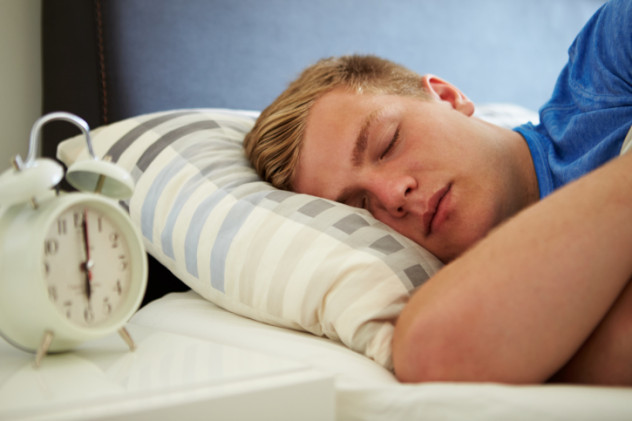
The typical adult needs seven to eight hours every night to function during the day. There are some people who need 10 hours or more a night to feel rested, and there are those who need only five hours of sleep a night to feel rested. For those who are long sleepers, they can function on nine hours of sleep during the work day, but they may increase their sleep during the weekend to include 12–15 hours of sleep during the weekend or on holidays.
Studies have shown that people who are long sleepers make up only about 2 percent of the population and are slightly more likely to be male. Long sleepers can have a higher risk of depression and anxiety although there is generally little that is medically wrong with them. People who are short sleepers tend to be male and tend to have normal personalities but can have some hypomanic episodes.
Despite opportunities to get more sleep, people who are short sleepers still maintain their approximate five hours of sleep even on weekends. Short and long sleepers represent the extreme ends of normal sleep behaviors. Both disorders are rare, but they tend to run in families. Studies have shown that people who are short sleepers tend to die earlier than those who are long sleepers, despite physical activity.
7Cataplexy

Ever laugh so hard or get so scared that you collapse and can’t move? Most people haven’t, but people with cataplexy are familiar with this. If a person with cataplexy experiences a strong emotion, whether it is a happy one like laughing or joy or a negative emotion like anger or fear, they lose muscle tone and can sometimes appear like they have fallen asleep. Laughter has been shown to be the biggest trigger for these attacks.
Cataplectic attacks can vary in severity from minor muscle weakness to total loss of muscle tone causing the person to collapse. Many people who have narcolepsy, excessive sleepiness that sometimes results in sleep attacks, may also suffer from cataplexy. While unable to move, a patient who has narcolepsy with cataplexy may also fall asleep during this time period. Most of these cataplectic attacks last only a few minutes, and it is usually treated with medication.
6Nocturnal Sleep-Related Eating Disorder
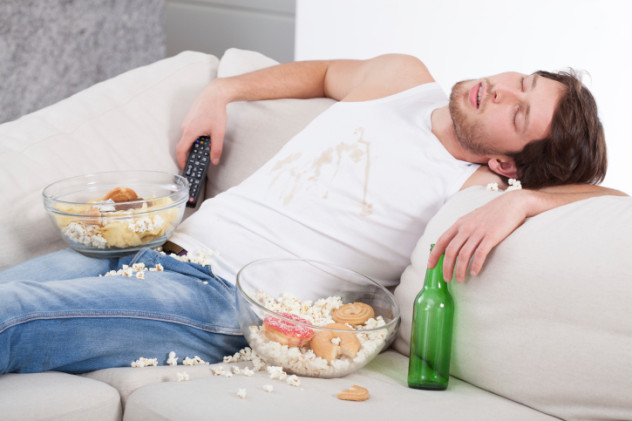
We have all gotten up at some point and gotten a midnight snack, but for some people, their midnight snacking is taken to extremes. This disorder is not to be confused with nocturnal eating syndrome (NES) where people binge eat at night. People with nocturnal sleep-related eating disorder, also called NSRED or SRED, are unaware of their sleep eating.
People with NSRED may eat a variety of things such as: sweets, drinks, raw food, spoiled food, glue, wood, and even cigarette butts. People with this disorder also handle foods very messily and have injured themselves through careless cutting of food or opening of cans. Rapid weight gain can happen over short periods of time, and people with NSRED usually suffer from obesity. Medications have been shown to help some with the disorder, but these treatments have not been effective for all people. Some medications, such as Ambien, can induce episodes of SRED, as can life stressors such as divorce and drug abuse.
5Rhythmic Movement Disorder
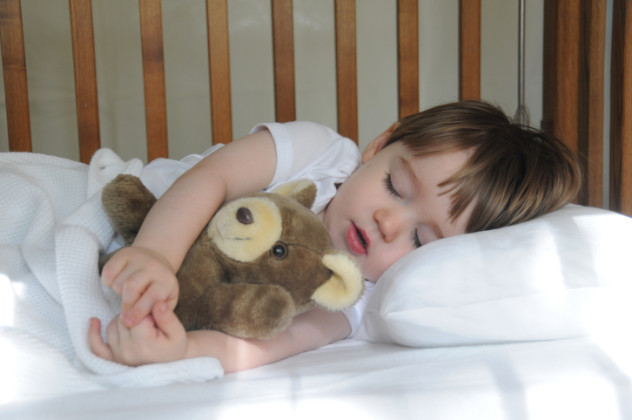
It can be very upsetting for a parent to see their child bang their head into the mattress or headboard as they are trying to go to sleep. Kids who have rhythmic movement disorder, or RMD, may head-bang, rock their bodies, hum, or roll their heads and bodies while they are trying to sleep. Most of the time, they are unaware they are doing this. The rhythmic movement can be seen during periods when the child is awake drifting into drowsiness and can continue or reoccur during deeper stages of sleep.
The movements are usually seen while the child is sleeping on their back or on their belly, but it has been observed when a child is sitting upright. People with RMD can have some form of developmental impairment such as autism. It can occur at any age, but is mostly seen in infants and toddlers and can disappear as a child ages and rarely requires treatment. For those with violent movements, padding the bed or crib can be effective in preventing injury.
4Hypnogogic Arousals
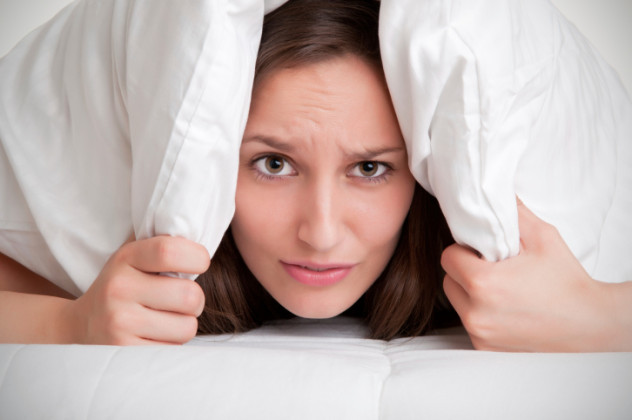
Also known as sleep starts or hypnic jerks, these are involuntary jerks, jumps, or falling sensations that occur just as a person is about to fall asleep. The corresponding jerk is enough to cause someone to jolt awake and can sometimes cause the person to have difficulty going back to sleep due to anxiety about having another hypnogogic arousal.
People who have irregular sleep patterns, excessive caffeine use, or who are going through high levels of stress in their lives are more prone to having these sleep starts, but 60–70 percent of people have reported having one. This disorder is very common and usually does not require treatment. It is usually encouraged to try to eliminate stress, caffeine intake, and to get more sleep to help with episodes. Experts still don’t know why people experience sleep starts, but some think it may be a result of evolution. It can also be a result of another underlying sleep disorder, such as sleep apnea.
3Alcohol-Dependent Sleep Disorder
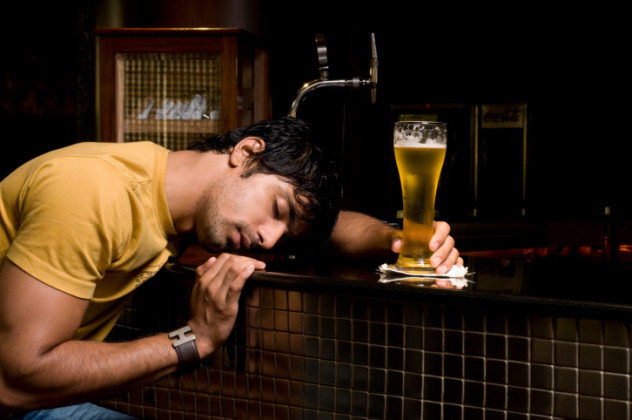
We have all had a nightcap or two and felt it really helped us to go to sleep, but there are people who take their use of alcohol as a sleep aid to extremes. People who have alcohol-dependent sleep disorder use alcohol as a sedative before bed for more than a month. Some people may think that this is a hallmark of an alcoholic, but alcoholism is usually not the cause of this disorder.
Typically, the disorder can cause alcoholism due to overmedicating. As people continue to use alcohol as a means to induce sleep, the effects will eventually decrease which can cause people to increase their alcohol usage and, as a result, increase their risk of alcoholism. Patients with alcohol-dependent sleep disorder complain of frequent arousals during dreams, sweating, headache, dehydration, and mild withdrawal symptom. Those who quit using alcohol as a sleep aid may discover that it is very difficult to go to sleep without the use of their nightcap.
2Delayed And Advanced Sleep Phase Disorders

People with delayed sleep phase disorder (DSPD) and advanced phase sleep disorder (APSD) are all around us. They are generally our teenagers and our grandparents. DSPD is seen primarily in teenagers. Their internal clock is usually set for them to go to bed a little later. Some people with DSPD may be awake for two to four hours before falling to sleep. They are usually more difficult to wake up in the morning, as anyone who has tried to get their teenager up at 6:00 AM knows. The fatigue and tiredness is due to insufficient sleeping primarily brought on by voluntarily staying up late and poor sleep habits. Cell phone abuse among teenagers has made it even easier for them to stay up and not go to bed at a time that would allow them to have the adequate amount of sleep necessary to function in the morning. Not surprisingly, people with DSPD usually consider themselves “night owls.”
Those with ASPD are generally adults over the age of 60. People with ASPD tend to go to bed very early, between 6:00 PM and 8:00 PM, and wake up very early, between 1:00 AM and 3:00 AM, but no later than 5:00 AM. Mild ASPD is generally associated with the normal aging process. Daytime napping may also be seen with ASPD. Those with ASPD generally describe themselves as “early birds.”
1Central Sleep Apnea
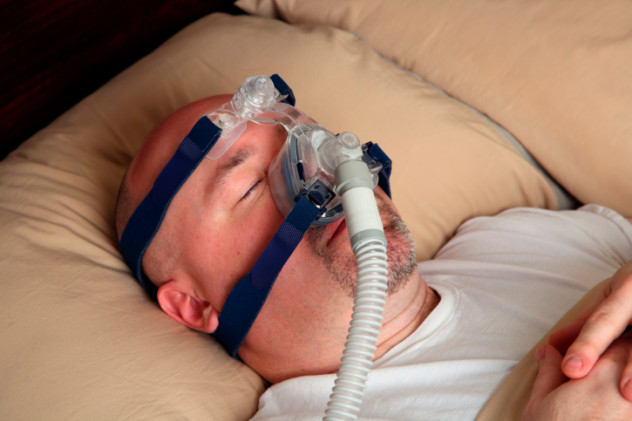
Most people are unaware that there are different kinds of sleep apnea. The kind of apnea most people suffer from is called obstructive sleep apnea, and it occurs when the airway is blocked. In central sleep apnea, the brain does not give a signal for the body to breathe and a person will simply hold their breath. This can occur in people who have abused pain medications or drugs, those who have suffered from head traumas due to car accidents and strokes, or those suffering from kidney or heart disease.
Although the treatment for obstructive sleep apnea is a continuous positive airway pressure (CPAP) machine, those who have central sleep apnea may need a form of PAP therapy called BiPAP (where an inhale and exhale pressure is chosen) or an adaptive servo-ventilation (ASV) machine (which helps to regulate the respiratory rate). Central sleep apnea is just as dangerous as obstructive sleep apnea and can contribute to obesity, diabetes, stroke, and cardiac arrest.
J.W. Alcenius has been a registered sleep technologist for the past five years and specializes in esophageal pressure monitoring and sleep education. His other hobbies include board games, cigars, cooking, and baking.
